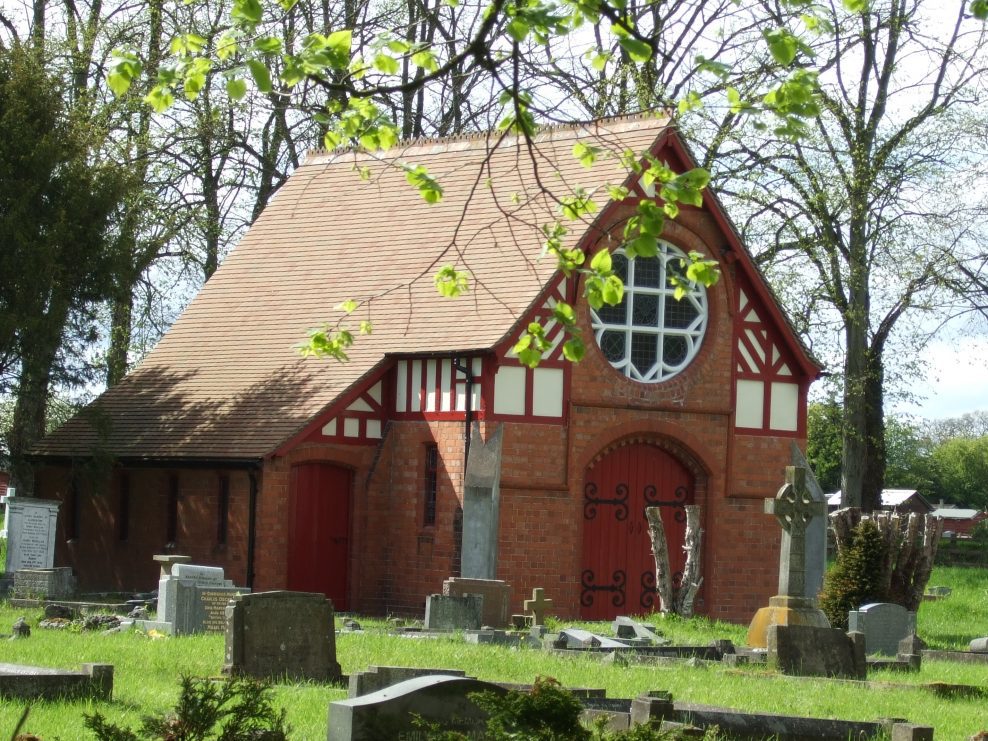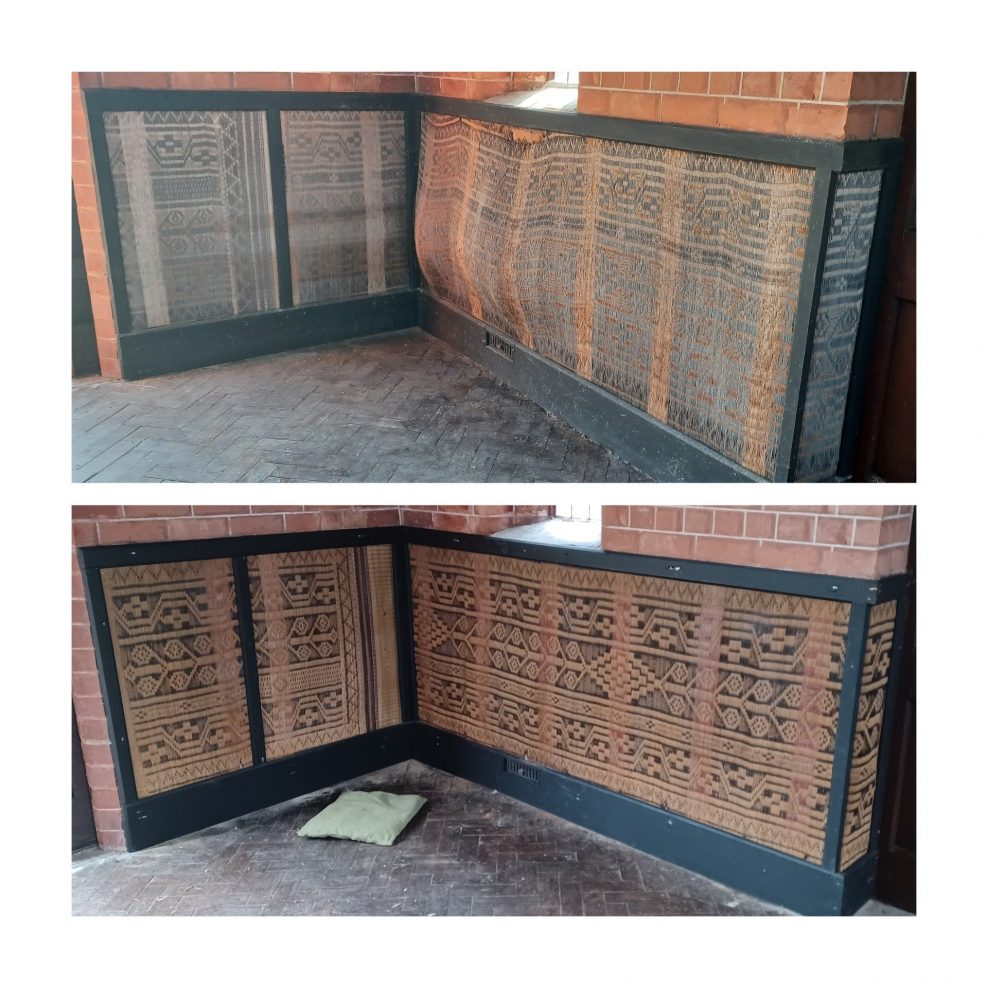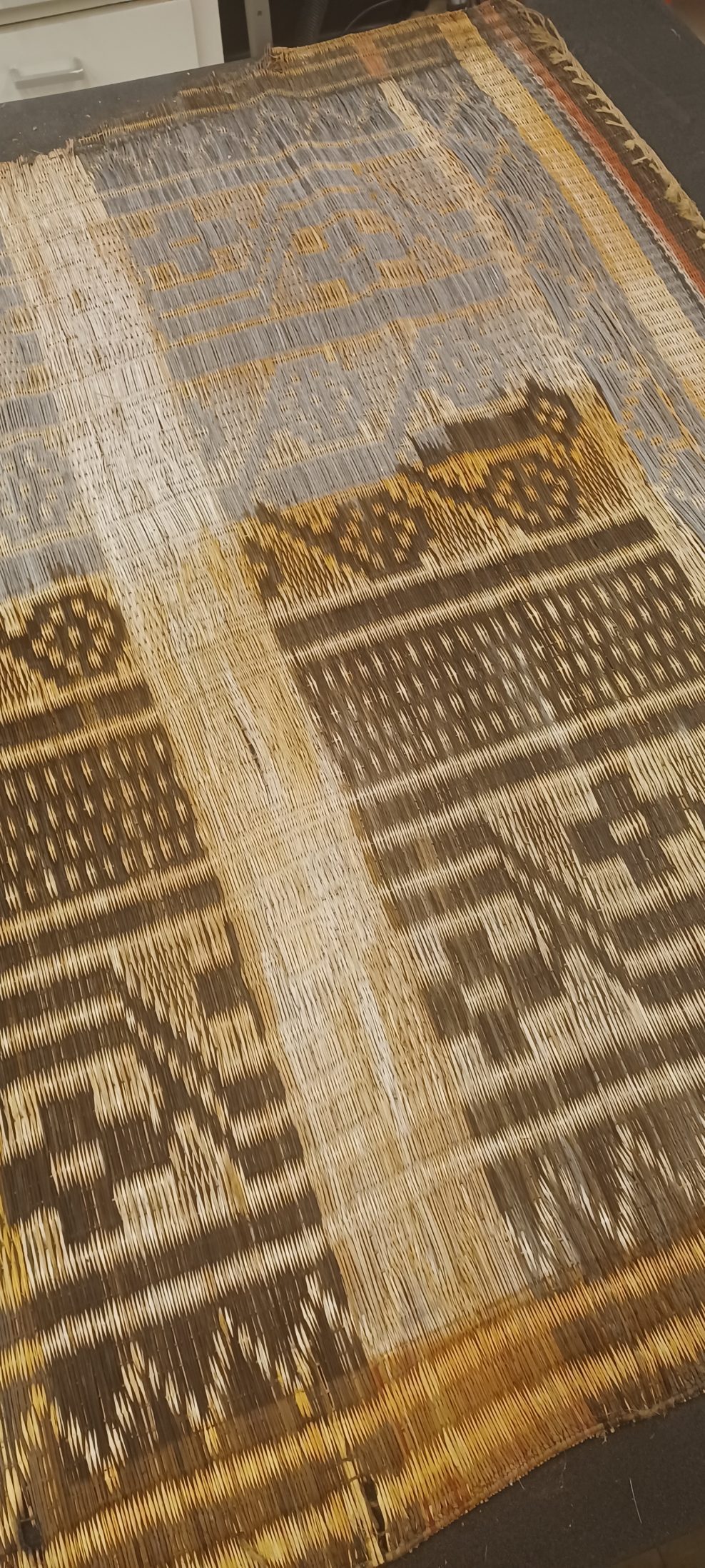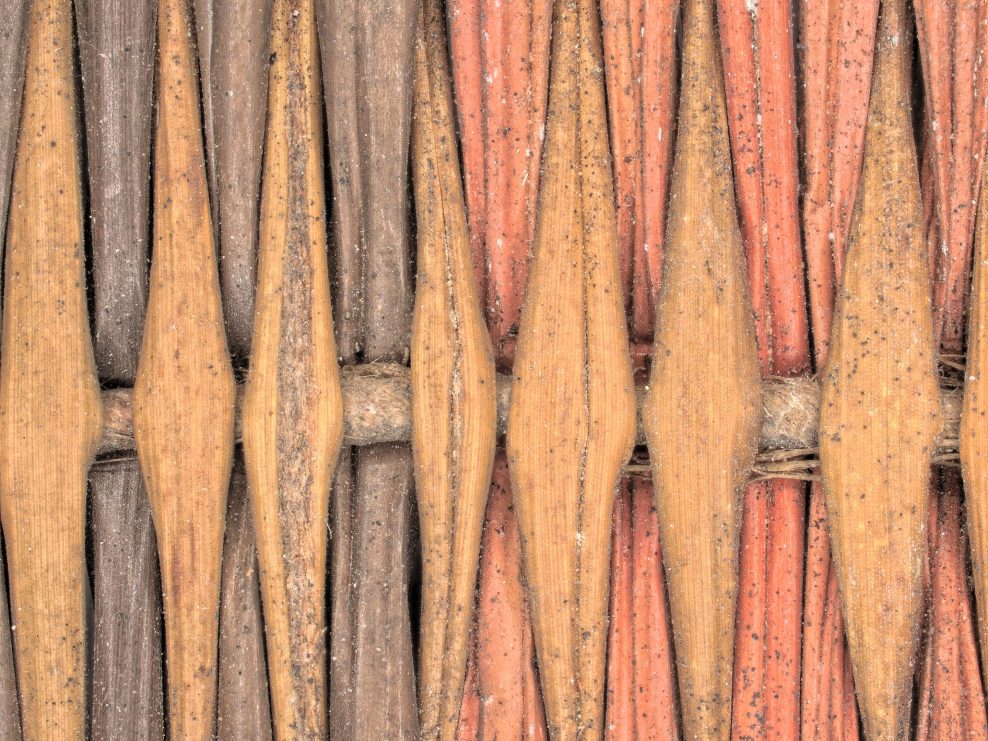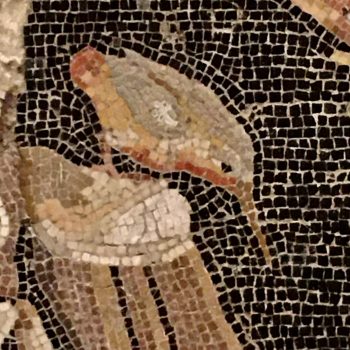Projects
Marran grass panels: Wem
Shortlisted for the 2023 Museum + Heritage Awards (Restoration or Conservtion project of the year)
The project achieved specialist conservation of fifteen loom-woven marram grass wall panels located in a small Victorian cemetery chapel in the market town of Wem in North Shropshire.
Shortlisted for the 2023 Museum and Heritage Awards (Restoration or Conservtion project of the year)
The project achieved specialist conservation of fifteen loom-woven marram grass wall panels located in a small Victorian cemetery chapel in the market town of Wem in North Shropshire. The chapel was designed by London architect George H. Birch, and was built in 1892. The beautiful and rare panels are part of the heritage of the town.
The need for conservation was urgent because the grass fibres had become brittle and faded, all of them had started to sag and the fixing nails were rusting away. The panels with naturally dyed, black, red and yellow geometric chevron and checked patterns could not be appreciated. There was a risk that the panels would become too fragile to allow them to be housed in the chapel and would need to be permanently removed (as more stable environment was needed) or they simply would not survive at all.
Drakon advised on and carried out the specialist conservation procedures and treatments with the Friends Group, engaging with the key stakeholders over the conservation project. This included: Wem Parish Church; the Diocese of Lichfield DAC; the local community; funders and interested parties (such as Shropshire Historic Churches Trust and the Worshipful Company of Basket Makers).
A full assessment of the panels was undertaken on-site to find the best-practice conservation strategy that best suited the panels and met the objectives. This ensured that the treatment was in-line with current code of conduct and ethical guidelines of the conservation profession.
It was decided that Drakon would work with the Friends Group to remove and reinstall the panels, with the conservation work undertaken off-site under laboratory conditions where specialist equipment could be used.
During deinstallation which exposed the brick work we could see that the panels were original to the chapel and not a later addition, but not made for the chapel as the conservation process was able to document that two longer panel were cut-up to better fit the chapel layout.
Samples of the panels were taken and analysed by Historic England, this showed that were marram grass and not rush grass, a more common fibre for weaving. This pointed to a possible Welsh origin.
